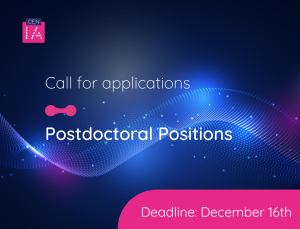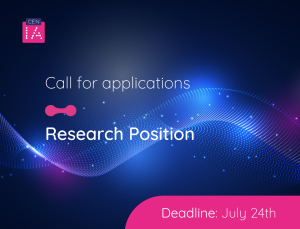
Engineers Eugenio Herrera and Lucas Suarez created the “AraucarIA” application, a prototype based on thousands of images that can recreate anything from a car to a painting.
Artificial intelligence (AI) is moving forward by leaps and bounds and is covering various areas of society. This is the case of “AraucarIA”, an application based on this technology and developed by two engineers, Eugenio Herrera and Lucas Suárez, from the technology transfer team of the National Center for Artificial Intelligence (CENIA). It is an app that allows creating images from text and drawings, like Dall-e, a similar international initiative, but for a fee. This will be free and has already been tested by children and adults.
AraucarIA is an interactive platform that allows you to draw and write what you want to create. You can start with simple sketches, which the system replicates with more complex images, and then re-enter something repeatedly to improve the result. Its developers emphasize that it is a creation process where the user actively participates by steering it in a certain direction. The data used came from the Lion2b database, a worldwide collaborative research center with two billion images. AraucarIA uses the “stable diffusion” model, with “a lot of engineering to make it work with drawings,” notes Herrera. It is available in Spanish, German and other languages, thanks to a built-in translator.
Record time
Eugenio Herrera, an engineer at Universidad Católica and a specialist in Machine Learning, says that they created the application after an invitation to participate in the Science Fair in La Moneda, Santiago (October 2022). There he came up with the idea of developing it, to bring AI closer to children and to entertain them with something more didactic, and as an exercise in creation.
He states that they had only three weeks to work on the project and test it with users, and that they took it as a challenge. It would be useful for them to simulate what a development cycle would be like. The expert says that when he was a child, he dreamed of being able to draw and create masterpieces. And when the opportunity arose to fulfill his childhood dream, he decided to create the app. It is called AraucarIA, because they wanted to associate it with Chile, as it is a native tree, and it coincided that the last two letters match the IA (Artificial Intelligence for its acronym in Spanish.)
Good reception
When they presented it at the science fair, it was used mostly by children. The success was so great that they were invited to show it in other places, for example, at the Puerto de Ideas Science Festival in Antofagasta this year. It does not require large resources for its operation. A notebook with a mouse is placed in these events, connected to a large screen, so that other people can see it. Herrera tells an anecdote he witnessed at the event, when he saw the children interacting with the system. He thought they did not know how to write, as they had a lot of difficulty with the keyboard.
Later he realized that this was not the case, but that it was uncomfortable for them, since they are used to using cell phones. For this reason, he believes that one of the next steps would be to develop the app for smartphones, and thus achieve a greater harmony with this age group. It was also well received by adults, and the engineer says that they liked it very much. They started by drawing simple elements and then made them more complex. Requests to the app ranged from objects in space to van Gogh-style paintings.

Difficulties
AraucarIA has a certain kind of complexity that allows it to create images with the data it receives. This model learned from a section of the Internet where they elaborate a kind of mind map with the information. However, it is not yet capable of doing everything you can imagine. A car is something simple to do, but the children who used it drew or wrote more difficult things, such as characters from series, new movies, or games. The system is limited to the database it uses, and if new elements come up, it probably won’t have them.
By not having it, the system generated random images, but there is where an opportunity arises. As a result of this, its creators generated a union of sensations, which made them think about how to improve it. “Once I wanted to draw a dinosaur and I realized that if I put specific colors, with the right shapes, or if I detailed it better in the text, it would come out better,” explains Herrera. This is called “fast engineering”, an AI concept that has to do with choosing the right words to make the models do what you want them to do.
Applications for the future
The Cenia researcher believes that his application could contribute to improve some areas of our daily life. One area where it could work is in school education, since he believes that it would make it easier for children to learn to draw. He details that, at the events, several teachers approached him to know if they could use the system to work in class with their students. Another area has to do with design. “I have a friend who wanted to decorate his house and used a feature that we would like to add later,” says the expert. This is the in painting functionality, where you take a real photo, select what you want to change and replace it with something in line with the original image.
In this case, he placed different furniture in the living room photo to see how it looked. It worked for him and he chose the one he liked best. For this reason, Herrara believes that this technology could be used for interior decoration or for any other sector that works with images and AI manipulation. He points out that AraucarIA simplifies the use of Photoshop, because the interface is simpler, with words, instead of a large number of buttons. With Lucas they want it to keep improving, to make it more intuitive, faster and friendlier.
In addition, they are looking to make it more scalable, so that more people can use it. Currently, they have to lease a machine, but they will try to optimize it to lower costs and keep it free to use. “I would love it to be open source, so that anyone can improve it and adapt it to their needs. It would help to encourage other people in Chile or Latin America to learn how to make an artificial intelligence application,” emphasizes Herrera.

By Cristián Yáñez W. Agencia Inés Llambías Comunicaciones







